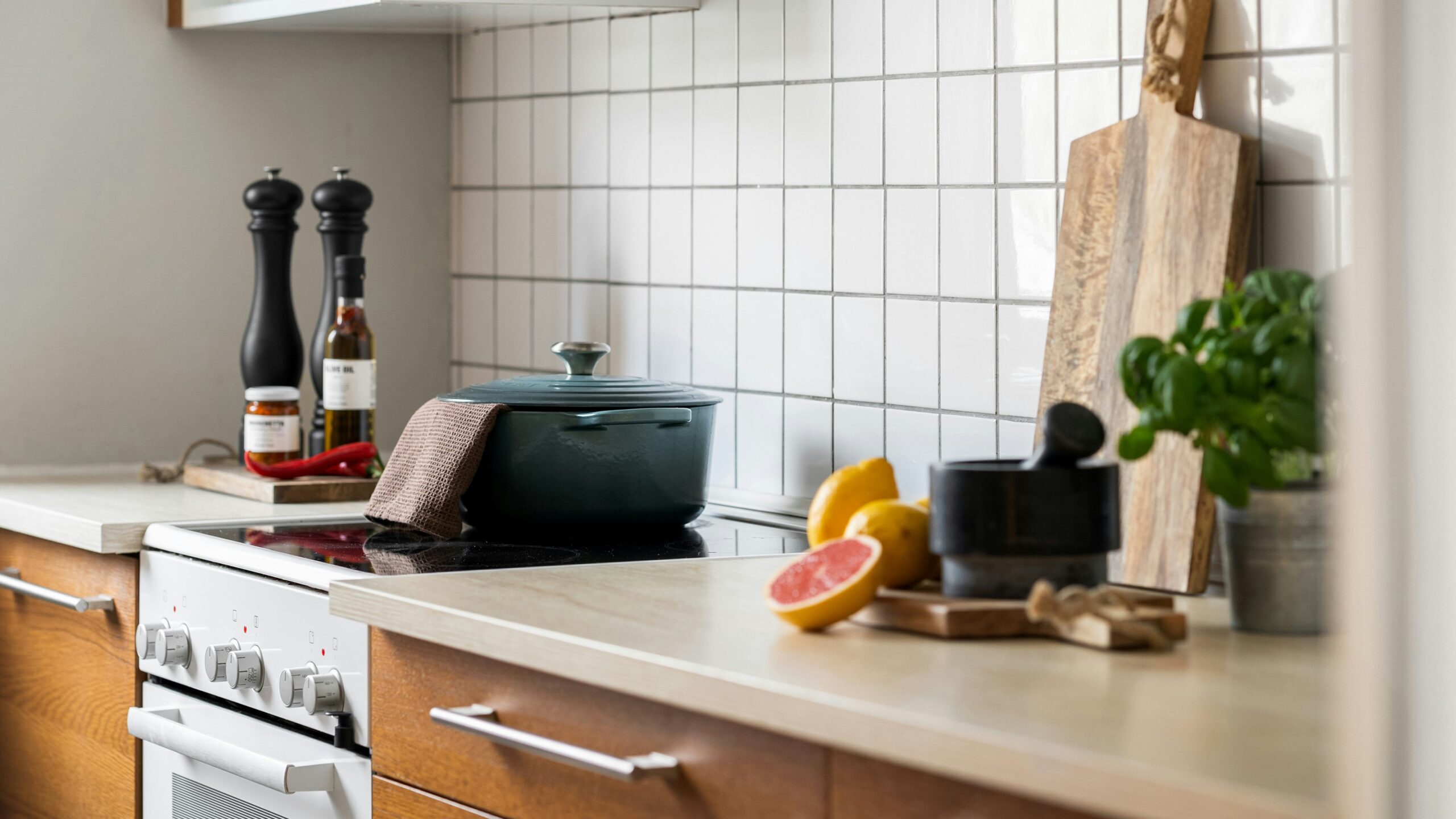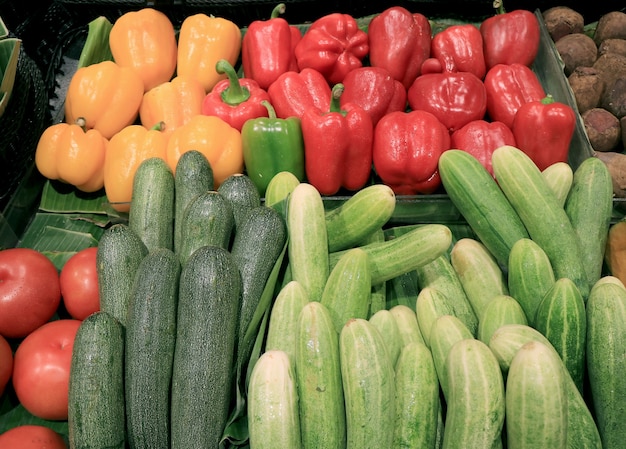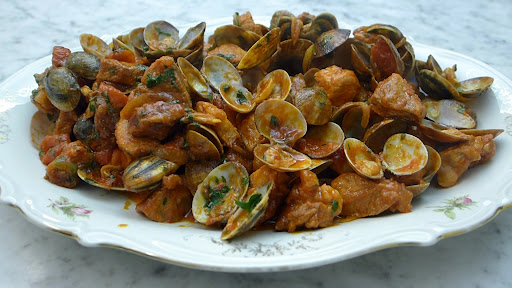From market-fresh tomatoes to orange-scented desserts, here’s how to bring the Algarve to your table – whether you’re in Lagos or London.
The Algarve is often described in shades of blue and gold – the colour of the sea, the sand, and the late sunsets. But ask a local, and they’ll tell you the region also smells like grilled sardines, tastes like just-picked oranges, and sounds like olive oil hitting a hot pan.

If you’re staying with us, your kitchen is ready. If you’re reading this from your apartment in Amsterdam, Zurich, or Manchester, you can still try these recipes. They’ve been adapted for home cooks outside Portugal, without losing their soul.
And while some Algarve classics require skills best left to the experts (grilled fish, we’re looking at you), these four dishes are achievable, rewarding, and a direct route to Portuguese culinary tradition.
Algarve Salad
Known locally as salada à algarvia, this combination of tomatoes, cucumber, onion, and peppers is a staple of summer tables across the south of Portugal. It’s almost always served as a side to grilled fish or frango piri-piri.
The key to its flavour lies in the olive oil (in the Algarve, usually fruity and low in acidity) and in using sun-ripened produce. Inland, coriander is common. Along the coast, oregano often takes its place.

— Ingredients (serves 4)
- 4 ripe tomatoes (beefsteak, heirloom, or any with rich flavour)
- 1 cucumber
- 2 green peppers
- 1 small red or white onion
- Fresh oregano or coriander
- Olive oil, white wine vinegar, sea salt, black pepper
— Recipe
- Roast the peppers
- Place the whole peppers directly over a gas flame or in a preheated oven at 220°C (425°F) until the skin blisters and blackens.
- Transfer to a plastic bag or cover with a damp tea towel for 10–15 minutes — the steam will loosen the skin.
- Peel off the skin, remove seeds, and slice into strips.
- Prepare the other vegetables
- Chop the tomatoes and cucumber into medium cubes.
- Slice the onion thinly.
- Assemble the salad
- Combine tomatoes, cucumber, roasted pepper strips, and onion in a large bowl.
- Season with salt and pepper.
- Dress generously with olive oil and a splash of vinegar.
- Sprinkle with oregano or coriander.
- Serve
- Toss just before serving to keep the vegetables crisp.
- Best enjoyed with fresh bread to mop up the juices.
Adaptation Tip: Outside Portugal, choose market or garden tomatoes over supermarket ones for the sake of flavour. Sweet red peppers work well, but if you can find the elongated type often sold as “Romano” peppers, they’re closer in flavour to those grown in the Algarve.
Fish Caldeirada
Caldeirada is a traditional Portuguese fishermen’s dish found along the entire Atlantic coast, but in the Algarve, it reflects the day’s catch: sea bass, bream, mackerel, or monkfish. Layers of fish, potatoes, peppers, and onions are simmered gently with olive oil, water, and a sip of white wine.
Historically, it was cooked aboard fishing boats or in simple seaside kitchens, using a single pot to feed the crew or family.

— Ingredients (serves 4)
- 800 g mixed fish steaks (a combination of firm white and oily fish, for example: tamboril, corvina, cação, safio, raia, etc.)
- 4 potatoes, sliced
- 1 onion, sliced
- 2 tomatoes, sliced
- 1 red pepper, sliced
- 2 garlic cloves, sliced
- 1 bay leaf
- 1 glass of white wine
- 200 ml of water
- Olive oil, salt, black pepper
— Recipe
- In a wide pan, layer potatoes, onion, tomato, pepper, and the fish. Repeat layers.
- Season between layers and drizzle with olive oil.
- Add garlic, bay leaf, wine, and the water.
- Cover and simmer gently for 35–40 minutes. Do not stir.
Adaptation Tip: In places without Algarve species, halibut, cod, sea bass, haddock, or mackerel can be good alternatives. But it’s really up to your personal taste. In the Algarve, every family has its own preferred mix.
Pork and Clams Cataplana
This dish, Carne de Porco à Alentejana, despite its name, is widely made in the Algarve, often in a cataplana – a hinged copper cooking vessel introduced to southern Portugal by Moorish influence centuries ago.
The combination of marinated pork and clams became popular in coastal areas where both ingredients were readily available. The sealed cooking method traps steam, intensifying the flavours.
It is typically served with fried potato cubes and lemon wedges.

— Ingredients (serves 4)
- 800 g pork (shoulder or loin), cut into 3–4 cm cubes
- 500 g clams, well purged of sand
- 4 garlic cloves, chopped
- 2 bay leaves
- 1 tbsp massa de pimentão (Portuguese red pepper paste)
- 200 ml dry white wine
- Olive oil
- Sea salt and freshly ground black pepper
- Fresh coriander, chopped (for serving)
- Lemon wedges (for serving)
— Recipe
- Marinate the pork
- In a large bowl, combine the pork, massa de pimentão, garlic, bay leaves, wine, salt, and pepper.
- Cover and refrigerate for at least 4 hours, ideally overnight.
- Prepare the clams
- Soak the clams in salted water for 2–3 hours to remove sand.
- Drain well.
- Cook the pork
- Heat olive oil in a wide pan or cataplana (if you got one during your stay).
- Drain the pork from the marinade, reserving the liquid.
- Sear the pork over medium-high heat until browned on all sides.
- Add the marinade
- Pour the reserved marinade into the pan.
- Cook until the pork is tender and the sauce has reduced slightly.
- Add the clams
- Place the clams on top of the pork, cover, and cook for 3–5 minutes, until they open.
- Serve
- Sprinkle with fresh coriander.
- Serve immediately with fried potatoes and lemon wedges.
Adaptation Tip: If massa de pimentão is hard to find outside Portugal, mix sweet paprika with a little smoked paprika, sea salt, and a splash of olive oil to form a paste. Fresh Mediterranean-style clams are ideal, but mussels can work as a substitute.
Orange Roll (Torta de Laranja)
The Algarve is Portugal’s main orange-growing region, with production centred in Silves and Tavira. The climate produces naturally sweet fruit, with low acidity and a rich aroma. Torta de laranja is a classic local dessert, valued for its moist texture (achieved by baking it just enough to set) and its intense citrus flavour.
It is a fixture in pastelarias, home kitchens, and festive meals.

— Ingredients (serves 4)
- 8 eggs
- 500 g sugar
- 40 g butter, melted
- 2 tbsp flour
- Zest and juice of 2 large Algarve oranges (or best available)
- Sugar for dusting
— Recipe
- Preheat oven to 180°C. Line and butter a rectangular tin (approx. 30×20 cm).
- Whisk eggs and sugar lightly – do not create foam.
- Add flour, butter, orange zest, and juice. Mix gently.
- Bake for 15–20 minutes – the centre should remain slightly wobbly.
- Sprinkle a clean tea towel with sugar, turn out the sponge onto it, peel off the paper, and roll while still warm.
Adaptation Tip: In northern climates, Sicilian or Spanish oranges offer the closest flavour to Algarve fruit.
—
Cooking Algarve food at home is a way to keep your holiday alive. But for the real thing, meaning sun-ripened tomatoes + fresh-caught fish + oranges picked that morning, nothing replaces being here.
Book your stay with Algarve Housing at www.algarvehousing.net
